July 13, 2017
Hanging out with chef Nazlina can never be bland!
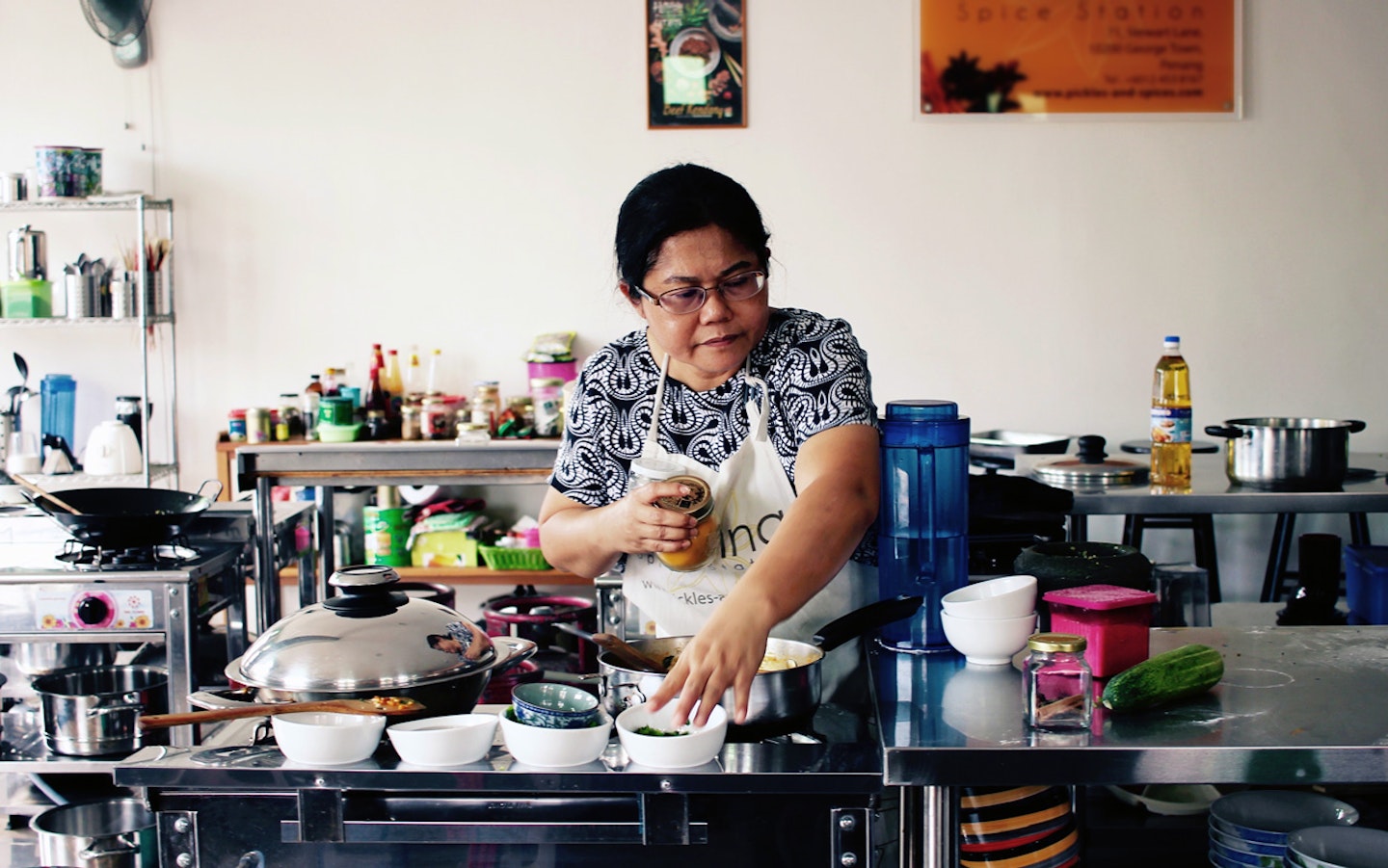
With the windows to Nazlina's workshop wide open, we can't escape the background noise: the vrooms of cars and motorcycles as they zoom down the busy Georgetown street. “It’s a bit noisy here,” she said and suggested a coffee shop nearby. Agreeing with her, we found ourselves at Yin’s bakery. Yin was a dear friend to Nazlina and they were both comrades of the Italian-based organization, Slow Food. There are three words to their tag-line: clean, fair and good. “Clean as in not manufactured or chemically-produced, fair as in buying from the source, and good like hand-made from quality ingredients,” Nazlina explains. “It may be more expensive, but this is your body – might as well invest in it.”

Nazlina's kitchen. Courtesy of Ethan Hsu.
With great spirit and enthusiasm, Nazlina told VAWAA about her life and cooking art, her hands moving back and forth as if she were a conductor orchestrating a great spectacle:
Let’s start from the beginning. What was your childhood like?
I was born in Penang and I grew up there. My hometown is a small village called Sungai Nibong. It’s now a bus terminal hub and not so much of a village anymore.
So, it’s more developed now?
Yes. When I grew up, we lived in a big double-storey house. Three generations lived there. Actually, no – four generations because at one point my great-grandmother was also living with us.
Growing up, who was in charge of the cooking?
My mother and my grandmother! Back then, if you had gone to the house, at any time, open any pot and there will be food in there! If somebody came at 10 at night – there was always some fish ready to be fried or some kuih (dessert food) in the fridge. Every morning, I would smell curry leaves being sautéed with onions.
That’s a very precise smell.
Yes, if I smell the curry leaves, I’m brought to that moment of between 9 to 10 a.m. when my grandmother is ready to cook lunch. We grew up eating simple but wholesome food. And, because I was in this environment, I grew up not wanting to eat outside food.
There’s nothing like home-cooked food. How did you help out as a kid?
We went to the grocery store when something was finished like sugar or coconut. When we got back with goods, we received 10 cents upah (wages) from our grandmother. I also followed my grandmother to the Chowrasta market.
Is Chowrasta market the same then as it is now?
Alive and thriving as it was forty years ago. Most of the vendors there, I had seen since I was little. Mr Lim, the spring roll man, is still at the same spot. Every morning, he brings 20kg of spring roll skin. That’s 2,000 pieces which he makes every day. Mind you, he is over 70 years old!
That’s incredible! What do you like about Georgetown?
The charm of Georgetown is all this old trade. I go to the market and I buy from the locals. Everyone here is friends. If I don’t go for a few days, they’ll wonder where I am.
It’s a close-knit community you have here.
This is something you won’t find in big cities, anymore. You can’t ask the cashier: “If I buy this fish, what can I do with it?” Over here, if you go to the market and saw something unusual, they’ll tell you “this one is special from Ipoh… and this is how you cook it” – so you get that information.
What’s special about Traditional Malay cuisine?
The real, traditional way has no cooking oil involved. Nothing deep fried. Mostly roasted, steamed, simmered, brewed or boiled! Today, I made: Roti Jala, Beef Rendang, Salad…
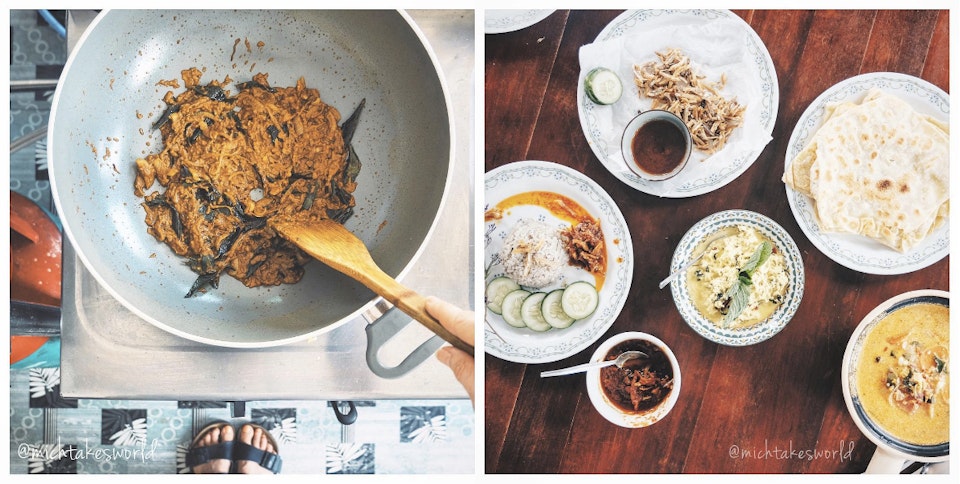
Michelle's VAWAA with Nazlina. Courtesy of Michelle Bluett.
…All without oil?
The only oil I used was about 6 tablespoons to fry the shallots. That’s it. And then, I made my rendang. I simmered it with water and spices. At the last minute, I added coconut milk.
I see, so it’s great for your body?
It’s a healthier way of cooking. Or eating something raw – like Nasi Ulam or Nasi Kerabu. And then there’s a lot of coconut involved. When I sauté a spice paste, I put 2-3 tablespoons of oil while most people put half a cup. You don’t need too much of cooking oil, when it starts to stick – use water. The steam will help lift the crust.
In a way, you’re also using the existing natural oils?
Natural – everything. Chilli and natural colouring. By eating that way, it heals you. I also use pink salt.
What’s pink salt?
It’s a natural salt from the Himalayas – not manufactured like the refined white one at supermarkets. That is sodium chloride which is two minerals. But, in pink salt, there’s 84 minerals which are similar to what you find in your body. You should get it!
What about food as medicine?
If you have a sore throat, just gargle with pink salt. If you have a fever, put tamarind paste on your forehead to cool yourself down. A mixture of lemon grass, turmeric, black pepper and a bit of ginger, infused by slow fire and drank with honey is good too!
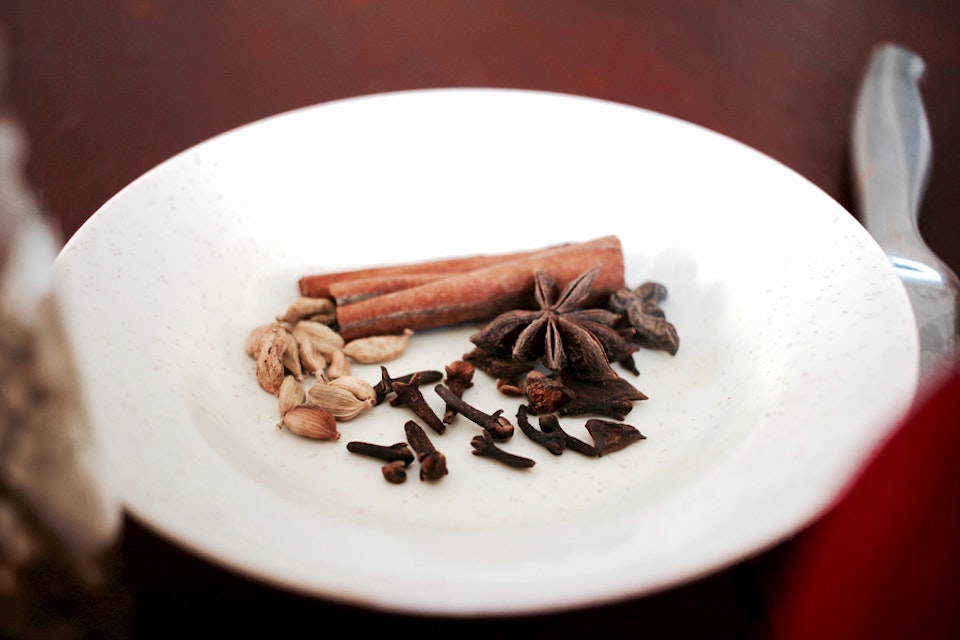
Learning about spices and how ingredients can heal you. Courtesy of Ethan Hsu.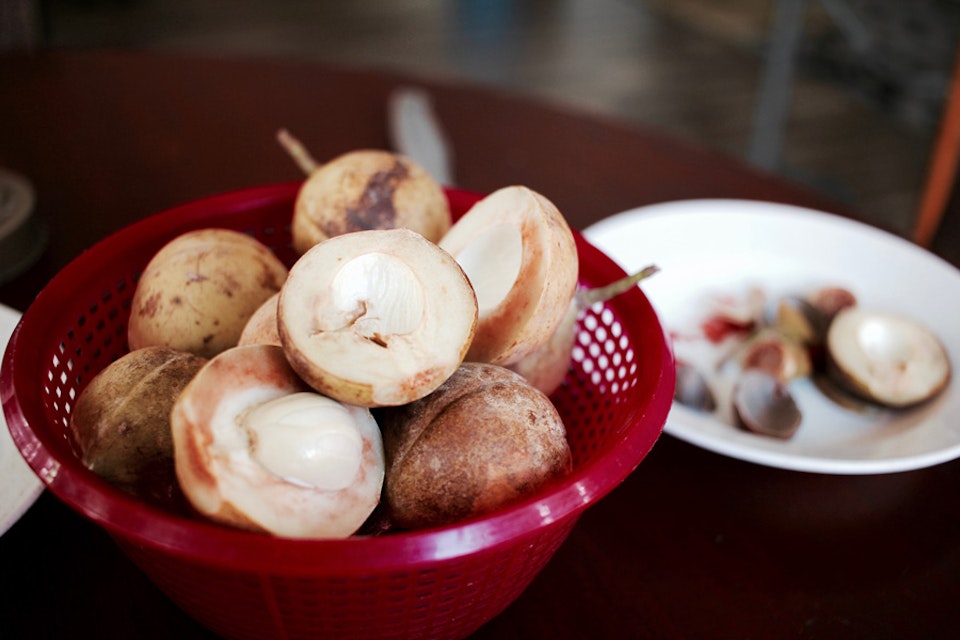
Using healing foods in recipes. Courtesy of Ethan Hsu.
How is cooking an art to you?
When I cook, I normally don’t follow recipes. So, I’m like an artist on a whim.
You create as you go…
Let’s say I want to make a four-angled bean salad. So, I go to the market and there are no four-angled beans. I would choose the next best thing. The art is knowing whether certain food mix well with others. That’s not something you can learn with a recipe book. For example, nobody teaches you how to choose a cucumber. People often ask me: “How is your cucumber not bitter – how do you choose?” You hold two cucumbers in your hand and you feel which one is heavier. The heavy one is sweet. The hollow one is already dried up.
Besides that, balancing the taste is also an art. With choosing galangal, the recipe might say 1-inch. How would you know whether to use fresh or dried galangal? You can’t use the same amount. If it’s fresh, 1-inch is good. But, if it’s dried, half is enough, otherwise it’d be bitter. Cooking is always an art.
That’s true – how do you keep food fresh?
I’m always particular with that. If I had to make spring rolls with coriander, I make sure that as soon as I buy my coriander, I wrap it in wet newspaper and put it in a fridge. Then, a big bowl of ice to maintain that freshness. Understanding how ingredients behave over time is also an art.
It’s also a science...
And it takes discipline! You also have to understand how food reacts with temperature. For example, kuih is commonly put in the fridge. You would think that cooler is better but this is not the case. The best is at chilled temperature, no colder than 18 degrees or at room temperature.
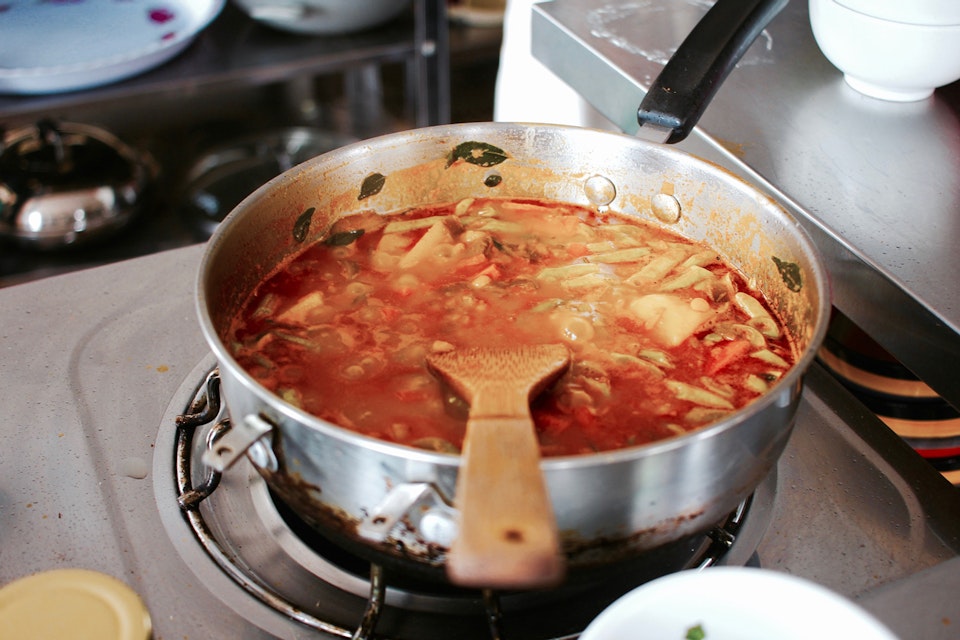
Experimenting with healing foods. Courtesy of Ethan Hsu.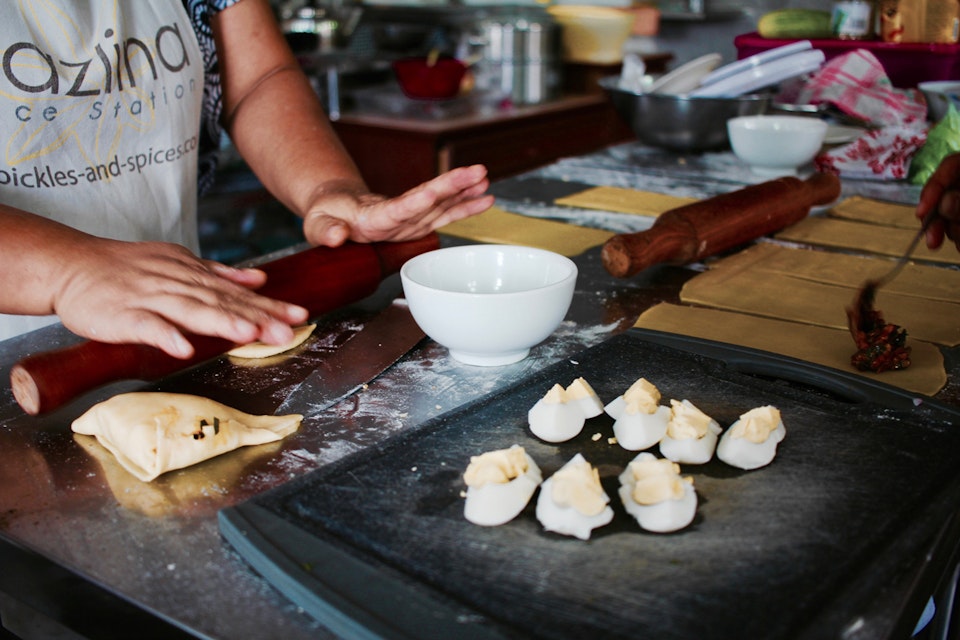
Learning fun ways to cook from scratch. Courtesy of Ethan Hsu.
What else is something you value?
No waste – finish everything that we cook. If there’s leftovers – I’ll give it to one of my kids or I’ll pack and give it away to people.
How can someone grow in the art of cooking?
These things don’t come naturally but like any artist the secret is to practice, practice and practice!
From choosing the right cucumber to the perfect herb cure, Nazlina will share and impart her knowledge to you. She is as flavourful as her cooking and as tantalizing as the spices she uses. She’s a bit feisty like good ol’ chilli padi but that’s what you want for that extra zest!
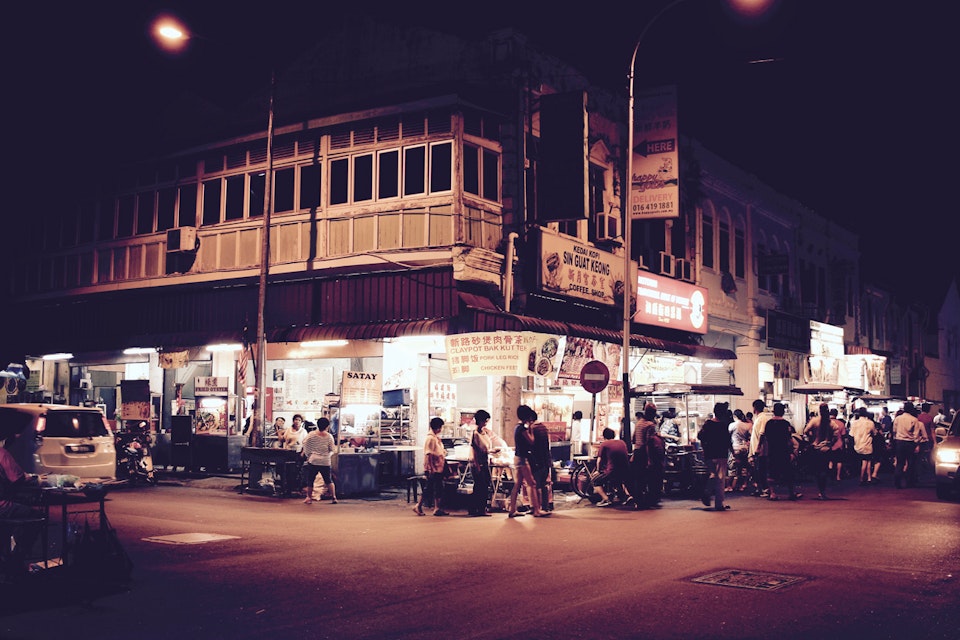
Georgetown, Penang, Malaysia. Courtesy of Ethan Hsu.
Written by Ann Ravinther
Vacation with Nazlina in Penang, Malaysia.
For more stories and new artist updates, subscribe here.